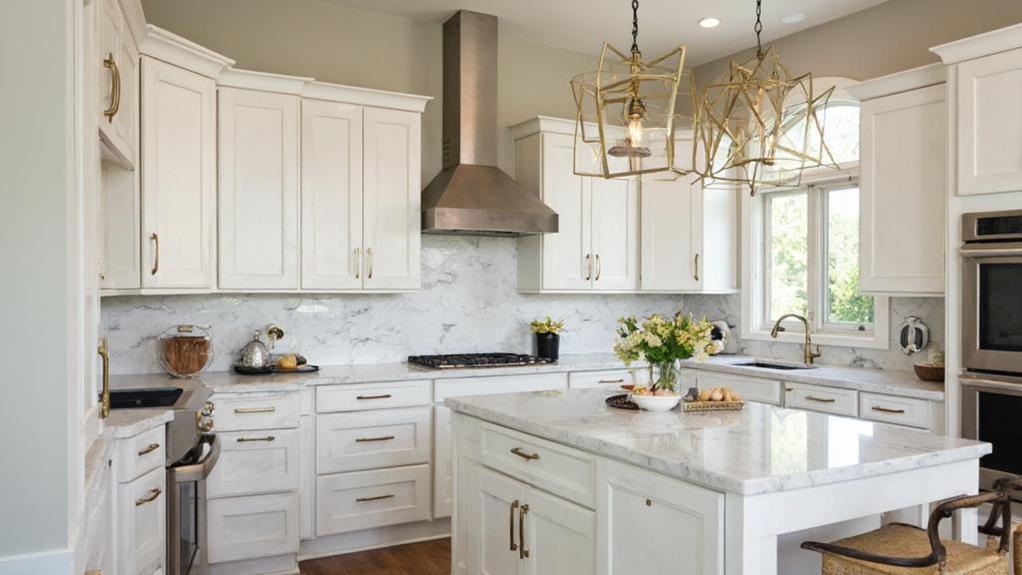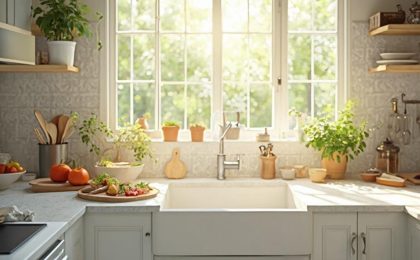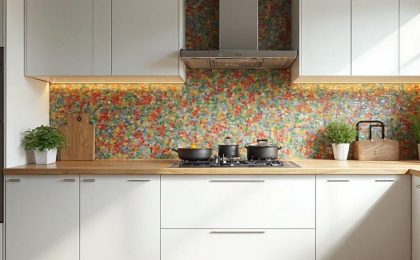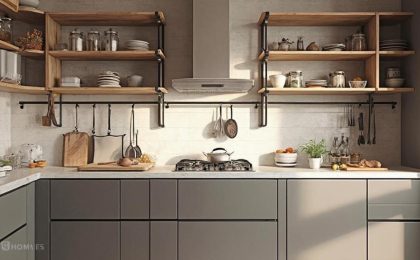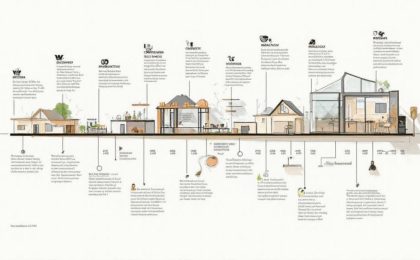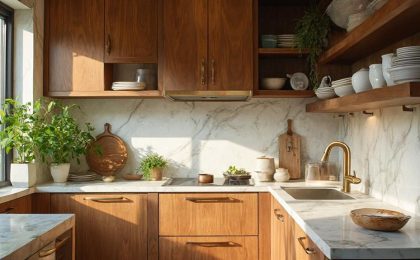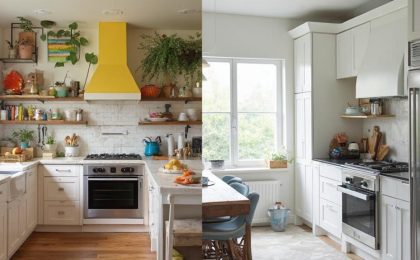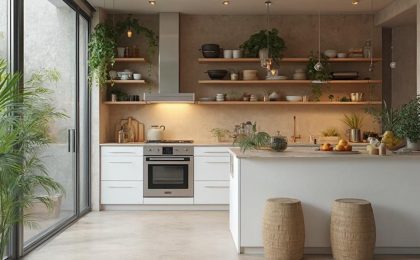When you’re looking to coordinate kitchen fixtures for a cohesive look, start by evaluating your kitchen style and determining how you want the space to feel. You’ll want to choose a color palette that not only complements your cabinetry and countertops but also sets the tone for your overall design. Selecting materials and finishes carefully is essential, as they need to harmonize with one another. The next steps involve ensuring balance and functionality through scale, proportion, and lighting. However, it’s the subtle details that can really tie everything together, and that’s where the magic happens.
Key insights
- Assess your kitchen style and select fixtures that match or complement the cabinetry and overall design theme for visual harmony.
- Choose a cohesive color palette that blends new fixtures with existing tones, utilizing materials that enhance the kitchen’s vibe.
- Match finishes and materials across fixtures to create a unified look, ensuring textures and patterns add interest without overwhelming the space.
- Coordinate fixture styles, limiting metal mixing to two or three finishes that work well together for a harmonious design.
- Plan lighting placement and types to enhance functionality and aesthetics, ensuring they align with the overall kitchen style.
Assess Your Kitchen Style
When it comes to coordinating kitchen fixtures, the first step is to assess your kitchen style. You’ll want to identify the key style elements that define your space. Is it contemporary with sleek lines and minimalistic features, or perhaps rustic with warm, earthy tones? Each style has its own unique flair, and recognizing yours will help you create a cohesive look.
For instance, understanding local preferences can enhance your design choices, as local expertise guarantees knowledge of Sheffield’s diverse home styles.
Next, look at your cabinetry, countertops, and flooring. These foundational pieces set the tone for your kitchen design. If you have traditional wooden cabinets, consider fixtures that echo that warmth—think oil-rubbed bronze or brushed nickel.
On the other hand, if you’re leaning toward a modern aesthetic, polished chrome or matte black could be the perfect fit.
Don’t forget about the smaller details, like knobs and pulls, which can enhance your chosen style. Each fixture should harmonize with the overall design, creating a seamless flow.
Choose a Color Palette
When picking a color palette for your kitchen, think about how your new fixtures will blend with the existing tones around you.
Consider not just the colors, but also the materials of your fixtures; the texture and finish can dramatically influence the overall vibe.
It’s important to choose fixtures that complement your tile choices, as professional tile fitters understand the significance of cohesive design.
Harmonize With Existing Colors
As you step into the heart of your home, the kitchen’s color palette plays an essential role in creating a harmonious atmosphere. By choosing colors that complement your existing fixtures and decor, you can achieve visual balance that feels effortless and inviting.
Start by considering color psychology; warm tones like reds and oranges can stimulate appetite, while cool hues like blues and greens promote calmness and serenity.
Begin with a foundational color that resonates with your personal style, then select two or three accent colors to add depth and interest. For instance, if your cabinets are a soft gray, pairing them with brass fixtures can create a sophisticated look.
Alternatively, if your kitchen features vibrant tiles, consider muted fixtures to prevent overwhelming the space.
Consider Fixture Materials
Choosing the right materials for your kitchen fixtures is essential to achieving both functionality and style. The materials you select won’t only set the tone for your kitchen’s aesthetic but also play a significant role in fixture durability and maintenance.
Consider stainless steel for your faucets and cabinet handles; it’s not only sleek and modern but also incredibly durable. It resists corrosion and staining, making it easy to maintain.
If you’re leaning towards a warmer look, brass or bronze fixtures can add a touch of elegance while still offering good durability, though they may require a bit more upkeep to keep their shine.
Don’t overlook the impact of your sink material, either. A composite or ceramic sink can provide a timeless look and withstand daily wear and tear.
Remember, the right choice here means less stress on material maintenance down the line.
When you harmonize fixture materials with your chosen color palette, you create a stunning visual flow that ties your kitchen together.
Select Complementary Materials
Selecting complementary materials for your kitchen fixtures can transform the space into a harmonious blend of style and functionality.
The right fixture materials not only enhance your kitchen’s aesthetic balance but also create a cohesive look that ties everything together. When choosing materials, consider how they interact with one another and the overall design theme of your kitchen.
Incorporating local expertise in your selection process can also guarantee that your choices align with regional trends and preferences.
Here are some ideas to inspire you:
- Brushed Nickel & White Quartz: The coolness of brushed nickel pairs beautifully with the sleekness of white quartz, creating a modern vibe.
- Wood & Stainless Steel: The warmth of natural wood contrasts nicely with the cool sheen of stainless steel, adding depth to your design.
- Matte Black & Marble: A striking combination, matte black fixtures against a marble backdrop offer a sophisticated, contemporary feel.
- Bronze & Glass: The rich tones of bronze complement the clarity of glass, adding elegance and charm to your space.
- Copper & Stone: The earthy tones of stone elevate the warmth of copper, creating a rustic yet refined atmosphere.
Match Finishes for Unity
When coordinating your kitchen fixtures, matching finishes is key to creating a cohesive look.
You’ll want to select complementary metal finishes that enhance each other, while also considering color consistency to tie everything together.
Don’t forget to harmonize textures and patterns to add depth and interest without overwhelming the space.
Select Complementary Metal Finishes
Harmonizing metal finishes in your kitchen can transform the space into a cohesive masterpiece. By selecting complementary metal finishes, you create an elegant flow that ties everything together.
Consider mixing and matching these finishes to enhance your kitchen’s aesthetic:
- Brushed Nickel: Offers a soft, modern look that complements various styles.
- Matte Black: Adds a bold, contemporary edge, perfect for a striking contrast.
- Polished Chrome: Reflects light beautifully, bringing a bright and airy feel.
- Antique Brass: Infuses warmth and charm, ideal for a vintage or rustic ambiance.
- Satin Bronze: Strikes a balance between modern and traditional, adding subtle sophistication.
You might also want to incorporate stainless steel appliances for a sleek finish, while adding copper accents for a touch of luxury.
Gold fixtures can elevate the space further, providing a striking focal point. As you choose, keep in mind the overall vibe you want to achieve.
Consider Color Consistency
Achieving a unified look in your kitchen goes beyond choosing complementary metal finishes; it also involves considering color consistency across all elements. Color psychology plays an essential role in how you feel within your space. By selecting fixtures that share a similar color palette, you can create an atmosphere that feels harmonious and inviting.
When coordinating colors, pay attention to current fixture trends. Matte blacks, brushed brass, and polished chrome are popular choices that can evoke different moods. Here’s a helpful table to guide your color selection:
| Color Finish | Mood/Effect |
|---|---|
| Matte Black | Modern, Sleek |
| Brushed Brass | Warm, Inviting |
| Polished Chrome | Bright, Clean |
| Oil-Rubbed Bronze | Rustic, Cozy |
| Satin Nickel | Soft, Elegant |
Harmonize Textures and Patterns
Creating a cohesive kitchen design involves paying close attention to the textures and patterns of your fixtures. By harmonizing these elements, you can achieve a stunning visual appeal that draws the eye and creates a unified space.
Consider these texture combinations to enhance your kitchen:
- Smooth stainless steel for appliances
- Matte black for cabinetry hardware
- Textured tile backsplashes
- Natural wood finishes for open shelves
- Glossy ceramics for decorative accents
Balancing these patterns is essential. A smooth surface can contrast beautifully with a textured one, providing depth without overwhelming the senses.
Guarantee you maintain a pattern balance by limiting your choices to two or three distinct textures. This practice helps to avoid chaos while adding interest.
Take time to evaluate how different fixtures interact with one another. For example, pairing a sleek faucet with a rustic sink can create an intriguing focal point.
By thoughtfully coordinating your kitchen fixtures, you’re not only enhancing aesthetics but also establishing a welcoming atmosphere that reflects your style and personality.
Embrace the art of harmonizing textures and patterns, and watch your kitchen transform into a cohesive masterpiece.
Coordinate Fixture Styles
To elevate your kitchen’s aesthetic, it’s essential to coordinate your fixture styles seamlessly. Start by selecting the main fixture types—like your sink, faucet, and lighting—that reflect a cohesive design trend. If you lean toward a modern vibe, opt for sleek, minimalist fixtures in stainless steel or brushed nickel. For a farmhouse feel, consider vintage-inspired fixtures in warm brass or matte black.
Next, think about the finishes. Matching or complementing finishes can create a harmonious look. If your faucet is polished chrome, it’s best to choose cabinet handles and light fixtures in a similar finish to keep things consistent. Mixing metals can work, but it requires a delicate balance; aim for two to three finishes that play well together.
Colors also play a significant role in coordination. If you’ve chosen bold colors for your cabinetry or walls, your fixtures should either blend subtly or stand out as intentional accents.
Consider Scale and Proportion
When designing your kitchen, paying attention to scale and proportion is essential for achieving a balanced and inviting space. The right combination guarantees that every element harmonizes beautifully, creating an atmosphere that feels just right.
Here are some key points to take into account:
- Fixture Size: Choose faucets and handles that are appropriately sized for your cabinets and countertops. Oversized fixtures can overwhelm small spaces, while tiny ones may get lost.
- Counter Height: Confirm your fixtures align well with the counter height, allowing for easy usability and visual appeal.
- Appliance Scale: Select appliances that complement the size of your kitchen. A massive refrigerator in a compact kitchen disrupts scale balance.
- Visual Weight: Reflect on the visual weight of materials. A heavy metal faucet can clash with delicate ceramic sinks if not balanced properly.
- Spacing: Maintain adequate spacing between fixtures to create a sense of proportion harmony. Crowding can lead to a chaotic feel.
Plan for Lighting Harmony
Lighting plays an essential role in the overall ambiance of your kitchen, and striking the right balance can elevate both functionality and aesthetics. To achieve lighting harmony, start by carefully considering lighting placement. Think about where you need the most illumination—whether it’s above your island, sink, or prep areas. Positioning fixtures strategically will guarantee you’ve got the right light where you need it most.
Next, explore various fixture types to create a cohesive look. Pendant lights over the island, under-cabinet lighting for countertops, and recessed lights in the ceiling all serve different purposes. Choose fixture types that complement each other in style and finish. For instance, if you opt for sleek, modern pendants, consider matching them with minimalist recessed lights.
Don’t forget about layering your lighting. A well-lit kitchen combines ambient, task, and accent lighting to create a warm and inviting space.
Use Accent Pieces Wisely
After establishing a harmonious lighting scheme, it’s time to turn your attention to accent pieces that can elevate your kitchen’s design. These elements not only add visual interest but also reflect your personal style.
By carefully selecting accent colors and incorporating decorative accents, you can create a cohesive look that feels inviting.
Consider these five ideas to enhance your kitchen with accent pieces:
- Colorful Dishware: Use vibrant plates or bowls to introduce pops of color.
- Stylish Towels: Hang decorative towels that match your accent colors, adding both functionality and flair.
- Unique Wall Art: Choose artwork that resonates with your kitchen theme and complements your fixtures.
- Charming Plants: Bring life into your space with seasonal updates through potted herbs or flowers.
- Functional Accessories: Opt for stylish kitchen gadgets that serve a purpose while enhancing your décor.
When used wisely, these accent pieces can transform your kitchen from ordinary to extraordinary.
Embrace creativity and let your personality shine through, making your kitchen not just a workspace, but a reflection of who you are.
Install With Consistency
As you commence on the journey of installing kitchen fixtures, maintaining consistency in design is key to achieving a polished and cohesive look. Start by evaluating your fixture placement; think about how each element interacts with one another. Consistency in style—whether modern, rustic, or traditional—can create a seamless flow.
When it comes to installation techniques, make sure you’re using the same screws, anchors, and methods for all fixtures. This not only guarantees a uniform appearance but also enhances durability.
Here’s a quick reference table to visualize fixture types and their ideal placements:
| Fixture Type | Ideal Placement |
|---|---|
| Pendant Lights | Above the kitchen island |
| Cabinet Hardware | Centered on each cabinet door |
| Faucets | Sink area, matching style |
Frequently Asked Questions
How Can I Incorporate Vintage Fixtures Into a Modern Kitchen Design?
Incorporating vintage fixtures into your modern kitchen design can create a beautiful blend of vintage charm and modern elegance.
Start by selecting a statement piece, like a retro faucet or pendant light, that captures attention. Pair it with sleek, contemporary cabinetry and minimalist hardware.
Use a muted color palette to allow the vintage elements to stand out, while adding modern appliances that complement the overall aesthetic.
This thoughtful mix will elevate your kitchen’s style and ambiance.
What Are the Best Ways to Mix Metals in Kitchen Fixtures?
Mixing metals in kitchen fixtures can create stunning fixture harmony.
Start by choosing two or three metal combinations, like brushed nickel and matte black, to maintain a cohesive feel.
Use one metal for your faucet and another for cabinet hardware, ensuring they complement each other.
Balance the look with light fixtures that incorporate both finishes.
This approach adds depth and character, making your kitchen feel modern yet inviting while showcasing your unique style.
Can I Use Different Styles for Fixtures in an Open-Concept Kitchen?
Absolutely, you can mix different fixture styles in your open-concept kitchen!
Just make sure they complement each other for cohesive aesthetics. For instance, pairing a sleek modern faucet with vintage-inspired lighting can create an intriguing contrast.
Focus on common elements, like color or materials, to tie everything together.
By thoughtfully selecting fixtures, you’ll enhance the space’s character while maintaining an inviting flow throughout your kitchen and adjoining areas.
Enjoy the creative process!
How Do I Choose Fixtures That Suit Both Functionality and Aesthetics?
When choosing fixtures, you should consider both functionality and aesthetics to enhance your space.
Start by exploring current fixture trends that resonate with your style. Think about color coordination; select shades that complement your kitchen’s palette while ensuring each fixture serves its purpose effectively.
For example, a sleek chrome faucet can blend beautifully with warm wood cabinetry.
What Are the Maintenance Tips for Different Kitchen Fixture Materials?
When it comes to maintaining kitchen fixtures, each material requires specific care to guarantee longevity.
For stainless steel, regularly wipe down with a soft cloth to prevent scratches.
If you’ve got brass fixtures, polish them with a gentle cleaner to keep that shine.
Ceramic needs less attention; just a mild soap and water will do.
You’ll notice that proper fixture care not only enhances aesthetics but also extends the life of your fixtures considerably!
Summary
By thoughtfully coordinating your kitchen fixtures, you create a space that flows beautifully and feels inviting. Embrace your unique style, choosing colors and materials that work in harmony with each other. Pay attention to the details—finishes, scales, and lighting—to guarantee everything feels balanced and cohesive. With a few carefully selected accent pieces, your kitchen can transform into a stunning focal point, blending functionality with aesthetic appeal. Enjoy the process of crafting a kitchen that truly reflects you!
